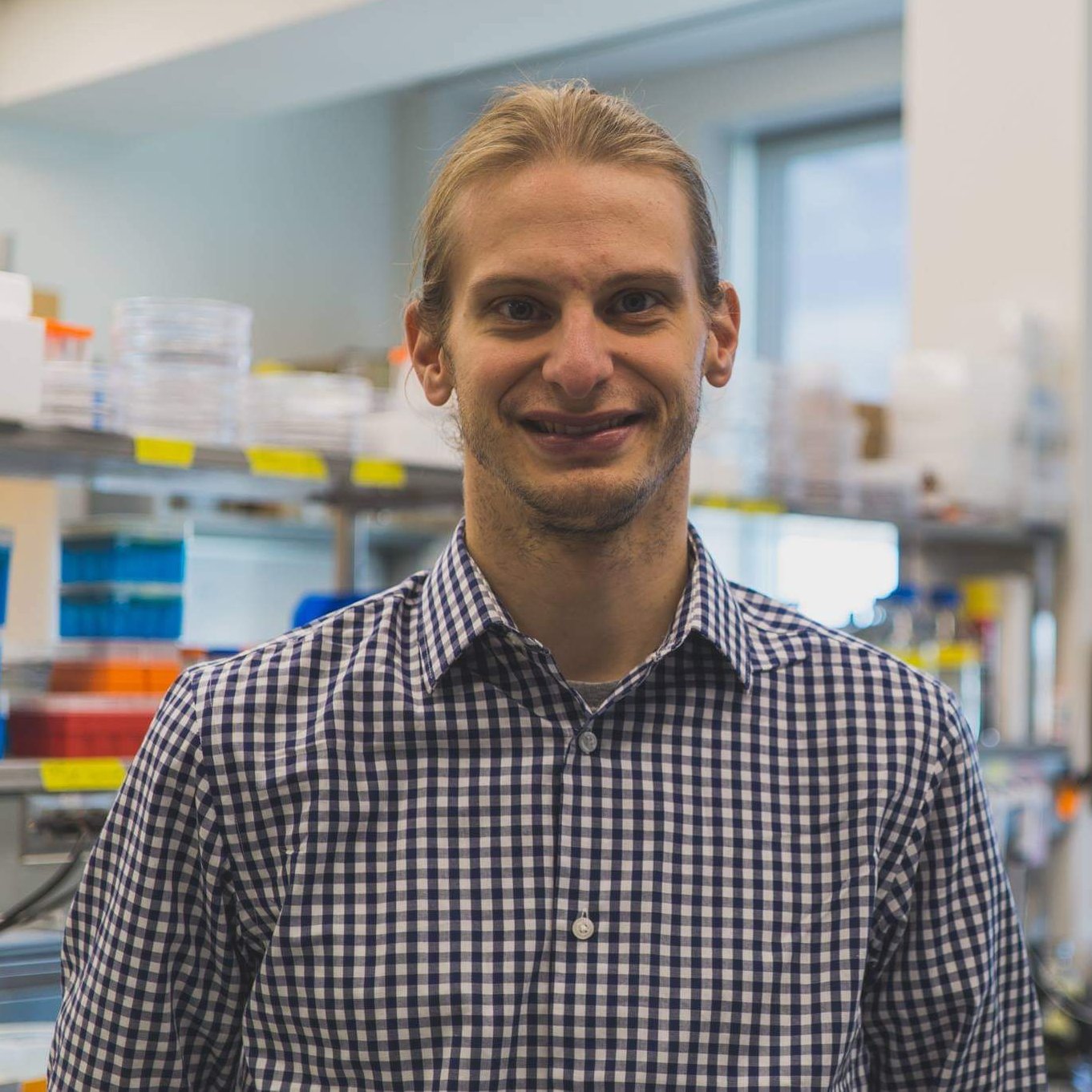Cellular and Molecular Bioengineering
(I-357) DNA-based micropatterning for epithelial-mesenchymal interface mechanobiology

Louis S. Prahl, PhD (he/him/his)
Postdoctoral Fellow
University of Pennsylvania
Philadelphia, Pennsylvania, United States- AH
Alex Hughes
Assistant Professor of Bioengineering
University of Pennsylvania, United States
Presenting Author(s)
Primary Investigator(s)
Interfaces between multiple populations of cells are engines of morphogenesis in the developing vertebrate eyes, skin, craniofacial bones, intestines, and kidney, and their breakdown leads to developmental defects. Despite a wealth of micropatterning tools available to control the size and shape of engineered cell-dense tissues, fine scale control of tissue composition and interface organization remains challenging to achieve since many micropatterning techniques couple cell adhesion area to micropatterned extracellular matrix (ECM) protein features. This limits our understanding of how cell-cell signaling and mechanical interactions guide interfacial tissue behaviors and morphogenesis. Here, we combine DNA “Velcro” micropatterning and ECM functionalization approaches generate precisely patterned tissue interfaces on mechanically defined hydrogel microenvironments.
Materials and Methods::
Photoactive polyacrylamide hydrogels were cast on methacrylate functionalized glass slides using varying mixtures of acrylamide (Am), bis-acrylamide (Bis) cross-linker, and benzophenone methacrylate (BPMAC) photosensitizer. Single-stranded DNA (ssDNA) oligos were iteratively UV-photopatterned on hydrogels through photomasks through photomasks into arrays of 10-100 µm-scale features to mark sites for cell capture. Hydrogels bearing ssDNA feature arrays were subsequently functionalized with fibronectin through NHS esters attached to the hydrogel through a separate photochemical reaction. MDCK and 3T3 cell membranes were labeled with lipid-tagged ssDNA to facilitate cell capture on hydrogel-bound ssDNA features. Patterning outcomes were measured using live imaging and immunofluorescence. Hydrogel stiffness was measured using a custom micro indentation apparatus.
Results, Conclusions, and Discussions::
MDCK epithelial cells and 3T3 fibroblasts were successfully patterned onto ssDNA feature arrays of varying size (10-100 µm) and shape on photoactive polyacrylamide hydrogels through lipid-ssDNA oligos inserted into the cell membrane. Patterned cells subsequently adhered to hydrogel-bound fibronectin cues introduced using a separate photochemical reaction. We varied the base elastic stiffness (~2-30 kPa) by changing Am/Bis ratios and that UV exposure did not have a significant effect on hydrogel stiffness, fibroblast spreading, or focal adhesion formation. To demonstrate the multiplexing capabilities of DNA patterning, we co-patterned MDCK epithelial cells expressing different fluorescent labels into an alternating chess board pattern and produced circular microtissues containing MDCK and 3T3 cells patterned into concentric ring structures. Interfaces between epithelial cells and fibroblasts showed pattern-dependent F-actin and E-cadherin staining, due to compression and localized alignment of fibroblasts at the interface. We observed that fibroblasts surrounded by epithelial cells became compressed, while epithelial tissues surrounded by fibroblasts expanded outwards. Interfacial epithelial cells also showed elevated phosphorylated ERK levels compared to the rest of the tissue.
Here, we have developed and validated a technique for producing patterned cellular interactions and tissue interfaces in vitro on photoactive hydrogels. We show that DNA patterning and ECM functionalization can be achieved on the same gel by orthogonal techniques, and that tunable bulk hydrogel stiffness is minimally affected by UV exposure. Finally, our results indicate that interfacial tissue behaviors involve geometry dependent cytoskeletal assembly and signaling, motivating in vitro studies of these micropatterned systems.
Our approach provides independent control over cell patterning, ECM functionalization, and substrate mechanics using a simple polyacrylamide hydrogel chassis. Furthermore, this approach requires minimal specialized reagents (benzophenone methacrylate and lipid-tagged DNA are commercially available or can be synthesized in lab) and achieves cell patterning outcomes comparable to other patterning techniques. This will enable studies of developmental cell behaviors, including tissue boundary formation and cell competition, and expand the design space for organoids.
Acknowledgements (Optional): : NIH Grants R35 GM133380, R01 DK132296, F32 DK126385
NSF CAREER Award 2047271
NSF National Nanotechnology Coordinated Infrastructure Program grant NNCI-202568
Penn Cytomics and Cell Sorting Resource Laboratory
References (Optional): : Prahl LS, Porter CM, Liu J, Viola JM, Hughes AJ. Independent control over cell patterning and adhesion on hydrogel substrates for tissue interface mechanobiology. iScience, 2023. 26(5): 106657 https://doi.org/10.1016/j.isci.2023.106657
